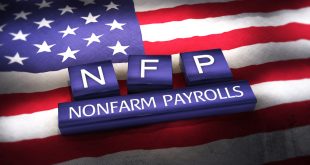
Wholesale Prices Surge as Tariffs Ripple Through US Economy
In July, US wholesale prices soared by 3.3% compared to the previous year, marking the largest increase since February and signaling that tariffs are increasingly impacting the American economy. The Producer Price Index (PPI), which tracks the prices domestic producers charge for goods and services, surged past June’s 2.4% annual rise, exceeding economists’ expectations of a 2.5% increase. This sharp uptick suggests that tariffs imposed on trading partners are driving up costs earlier in the supply chain, even as consumer price inflation has remained relatively contained.
The rise in wholesale prices was notably fueled by a 2.1% annual increase in processed goods, including fuel and materials used in manufacturing and construction—the largest jump since February 2023. Analysts highlight that higher margins for wholesalers and retailers, along with a spike in fees charged by fund managers, contributed significantly to the PPI increase. The core PPI, which excludes volatile food, energy, and trade prices, climbed 2.8%, surpassing forecasts and rising from June’s 2.5%. This indicates broader inflationary pressures building within the economy, even if consumers have yet to feel the full impact.
Despite the wholesale price surge, separate data showed consumer price inflation holding steady at 2.7% in July, defying expectations of a slight rise to 2.8%. Economists warn that the tariff-driven cost increases at the wholesale level are likely to filter through to consumers over time, potentially raising the prices of everyday goods. The data underscores the ripple effects of trade policies on the supply chain, pushing businesses to charge higher prices to one another.
The latest figures complicate the Federal Reserve’s decision-making as it considers whether to cut interest rates at its upcoming September meeting. A rate cut could provide relief to a slowing labor market but risks exacerbating inflation. Following the PPI release, the dollar strengthened, and short-term Treasury yields rose, with the two-year Treasury yield climbing 0.05 percentage points to 3.72%. Market expectations for a quarter-point rate cut at the Fed’s next meeting, previously fully anticipated, dipped slightly to around 95%.
The broader market response was muted but noticeable, with the dollar rising 0.3% against a basket of currencies and the S&P 500 falling 0.3% at the opening of Wall Street. Analysts suggest that while the PPI data is significant, upcoming jobs reports will likely carry more weight in shaping the Federal Reserve’s next steps. The report also follows recent leadership changes at the Bureau of Labor Statistics, amid claims of manipulated economic data, adding a layer of scrutiny to the figures. For now, the surge in wholesale prices serves as a stark reminder of the far-reaching effects of tariffs on the US economy.
 Noor Trends News, Technical Analysis, Educational Tools and Recommendations
Noor Trends News, Technical Analysis, Educational Tools and Recommendations




